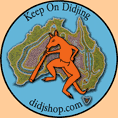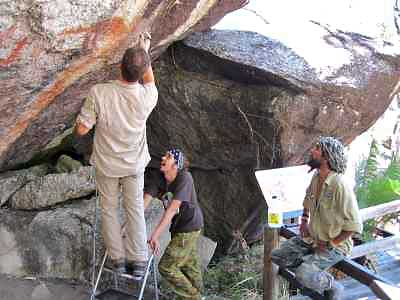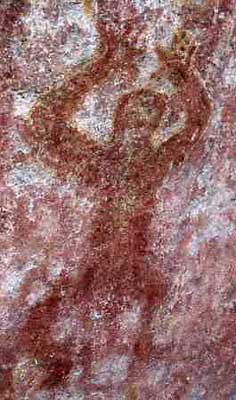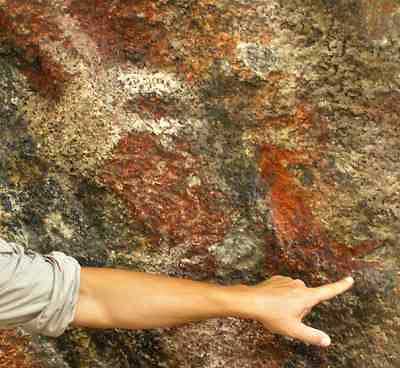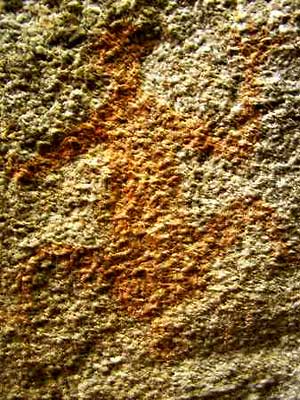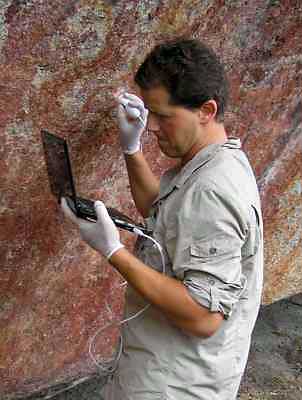| Preserving Aboriginal Rock Art | |||||
Our local Aboriginal tribe is Bulwai, which is part of the Djabugai clan. While the Djabugai lived in the rainforest country around Kuranda which is World Heritage today, the Bulwai lived mostly in the open forest country just to the west, namely the Clohesy river, the Davies creek and Emerald creek areas. The central figure on the main rock face is Ganandoran. According to Bulwai legends Ganandoran was badly burned by two woman and he came here to die. Since the burning was accidental, Bulwai women decided to give birth at this rock. Some of the images on the rock are of woman giving birth, but most of these have been lost or are badly faded. The rock seat where Aboriginal mothers have given birth for thousands of years is still clearly visible and just above it it has the best image of a woman giving birth.
Bare Hill is not just one of the few sites where birth is depicted, but it is also the only known rock art site depicting kangaroos with an open mouth. Sadly some of the rock art has been lost and most of it is threatened, which is mainly due to moisture causing several problems. The less obvious issue is that moisture is actually penetrating the rock. This moisture in the rock expands and contracts as the rock heats up under the sun and then cools again at night. This constant change widens tiny cracks which allows more moisture in and so on. Ultimately the top layer of rock will flake off (typically about 3-10mm thick). This means the permanent loss of any ochre art on top of that particular flake.
This is where Willie Brim, Gaby Schierenbeck, Ferdinand Karl and Jürgen Steiner come into the story. Luckily another friend of Ferdinand, Jürgen Steiner has a business in Austria to restore rock floors in castles and churches which are affected by moisture. Jürgen agreed to come to Australia and have a look at the threatened rock art to see what he can do.
After over three years of analysis and preparation, a plan was finalised and in October 2009 Jürgen Steiner used an airbrush to blow low-molecular silicic acid dissolved in alcohol onto the rock. This mix is able to penetrate the rock to a depth of about 5-7 cm, filling minute cracks in the rock, thus binding and stabilising the rock. It is wonderful that this significant site has been saved from the ravages of time and water.
This is probably the first ever such effort to preserve Aboriginal art in Australia and I wish to thank Willie, Ferdinand, Gaby and especially Jürgen for volunteering their time and making this happen. Jürgen Steiner and everyone else involved in this project have worked for free and have even covered the significant expenses out of their own pockets, but they obviously cannot keep doing this. However there are many more important art sites, not just in this area but all over Australia. Jürgen would be happy to teach others his knowledge about how to preserve Aboriginal rock art, but what is really needed is a sponsor or some government money or maybe a university to continue this important work. If you can help in any way, please contact us. |
|||||
|
Home | About Us | Checkout | Community | Help | Information | Shopping Didj Forum | Send a Didj Greeting Card | Guest Book |
|||||
| © Didjshop.com, 1993-. For rights reserved and granted see our Copyright notice. |
